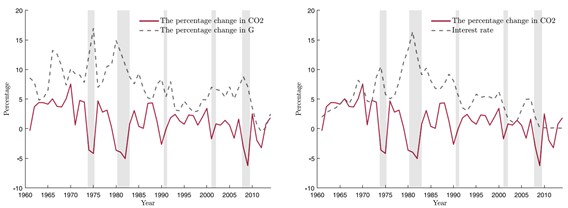
ABSTRACT
The environmental impacts of macroeconomic policies, and their interaction with climate policies are underresearched in the existing literature. This paper compares the effectiveness of standard macroeconomic tools (fiscal and monetary policies) with carbon taxation in curbing air pollution by using an environmental dynamic stochastic general equilibrium (E-DSGE) model. We show how government expenditure, interest rate, and carbon tax rate should vary over time in order to stabilize carbon emission levels. We find that (i) while all the aforementioned policies could stabilize carbon emissions, their underlying mechanisms are different. Fiscal, monetary, and carbon tax policies, uniquely and respectively, lead to a reduction in abatement effort, income tax revenue, and general price level. (ii) With economic expansions driven by total factor productivity (TFP) shocks, fiscal policy is the only policy that could maintain the emission levels and simultaneously improve household welfare in term of consumption and labor. (iii) Regarding the interaction between carbon and macroeconomic policies, carbon taxation should complement monetary policy, while it should not respond to fiscal policy.
KEYWORDS
Emissions tax; Fiscal policy; Monetary policy; Climate change
JEL CLASSIFICATION
Q85; E52; E62
Energy Policy
https://doi.org/10.1016/j.enpol.2020.111454
